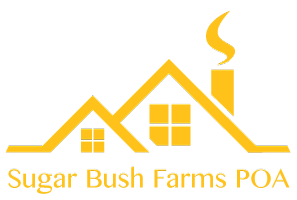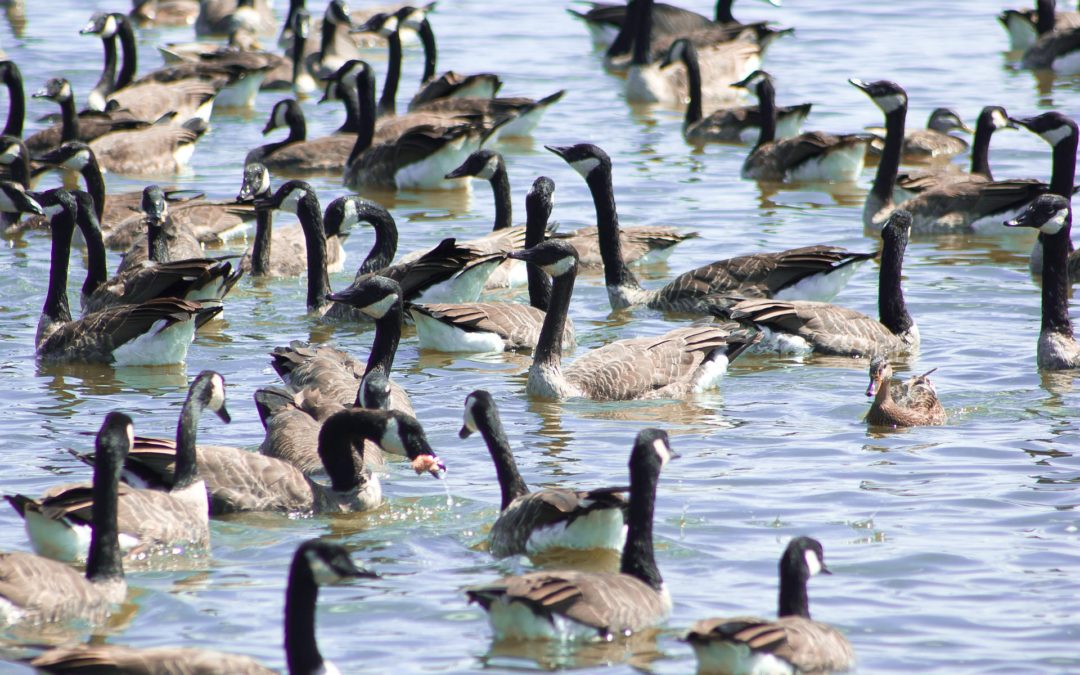Canadian Geese
Homeowners are permitted to destroy goose eggs and nests on their property. However, the federal government requires that you register before doing so and that you follow certain regulations. This document explains the rules. To register, visit the Resident Canada Goose Nest and Egg Registration Site.
General Guidelines
You must register each year prior to taking nests and eggs. You must also register employees or agents that may conduct the work on your behalf. You must be at least 18 years of age to register.
Nests and eggs may be taken only between March 1 and June 30.
What methods are allowed for destroying and disposing of nests and eggs?
Eggs may be shaken, punctured, or oiled. Anyone oiling eggs must use 100% corn oil, a substance exempted from regulation by the US EPA under the Federal Insecticide, Fungicide & Rodenticide Act.
Destroyed nest material and eggs may be left in the field or disposed of by burial, incineration, or placement in outgoing trash, in accordance with local ordinances.
Nests and eggs may not be retained for personal use.
No one is authorized to possess, sell, offer for sale, barter, or ship for the purpose of sale or barter nests or eggs taken under the depredation order.
Be cautious if attempting to conduct these activities yourself as Canada geese are very aggressive during the nesting period and may attack a person coming close to their nest.
Nuisance Canada Goose Management –
Do Not Feed Waterfowl
Habitat Modification
Barriers (Vegetative, Rock, Fences, Grids)
Harassment Techniques (Hazing /Scaring)
Harassment techniques are used to frighten and discourage geese from using your property. They are non-lethal and it is legal to harass Canada geese without a federal or state permit as long as they are not touched or handled by a person or a dog. Different harassment methods can entail the banging of pots and pans, clapping hands, following with a leaf blower, chasing with dogs, high pressure water spray devices such as garden hoses, pyrotechnics or anything that makes a loud noise. Make sure to scare the geese away as soon as they fly in. Once they get comfortable and feel safe in a certain area, they are much more difficult to run off.
Muskrats
What Damage can a muskrat do? Pond dams, marinas, docks and boat houses are all prey to muskrat burrowing, the worst damage these animals can do on your property. Burrows surrounding the banks of ponds or lakes in your yard can be a hazard for children to trip in and break ankles and legs.
Please let us know the approximate location that you spotted the muskrat. If you see where the muskrat is burrowing please inform us as soon as possible. You can email us at Sugarbushfarms@gmail.com
Decoys
I am sure that some of you have noticed the flat decoys of coyotes and dogs that have been placed around ponds in other neighborhoods or businesses. Do these work? No. The reason is they are flat; they lack depth or dimension. One member of Sugar Bush Farms has experimented over the last year with swan decoys. In nature, Mute swans aggressively protect their young from Canada Geese, making this decoy an effective deterrent. The decoys they used have heads and necks that can be adjusted for a realistic look. These plastic decoys can be free floated or secured in the water with string and weights. They may also be secured on shore with two steel anchoring stakes. The decoys have been moved periodically to increase their effectiveness. Our neighbors report that the ‘geese don’t even come near their end of the pond. They fly over, but they do not land or swim near them.”
Tell us how you have effectively kept geese from your property or pond.

